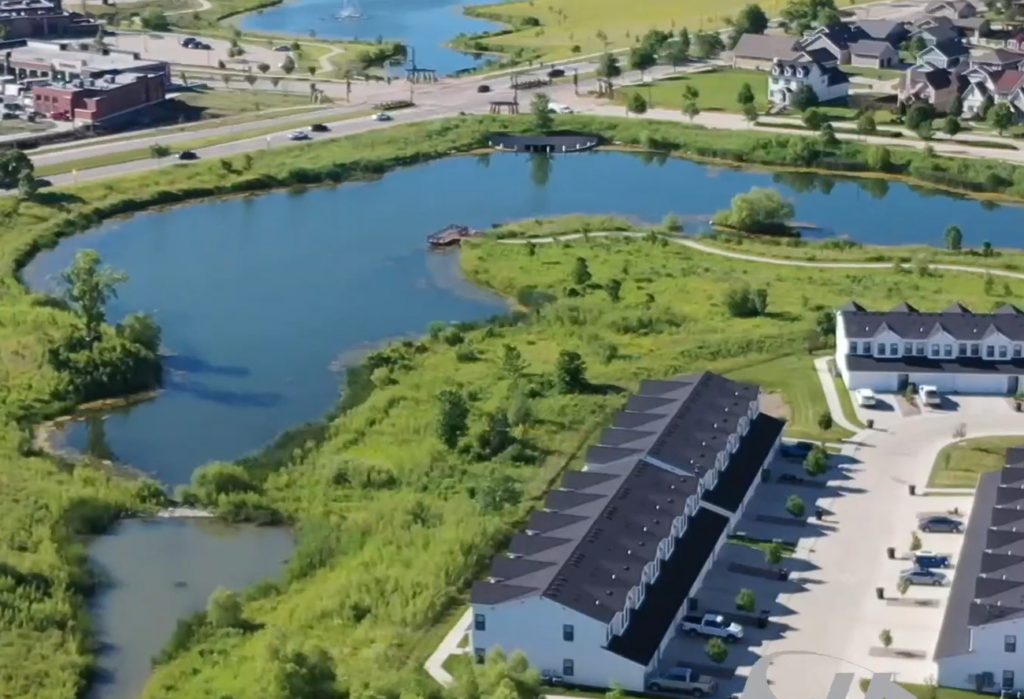Detention basins and ponds are engineered features that manage stormwater by temporarily storing runoff and releasing it at controlled rates. These systems come in two main varieties: wet ponds (retention basins) maintain a permanent pool of water, while dry ponds (detention basins) hold water only during and shortly after rainfall events. Both types help prevent downstream flooding by capturing peak flows and slowly releasing water over time. Enhanced versions incorporate native vegetation, varied topography, and natural features that improve water quality while providing wildlife habitat. When properly designed, these stormwater management systems can become attractive community assets while effectively protecting downstream areas from flooding and erosion.
Key components
Inlet structures: Engineered entry points where stormwater runoff flows into the basin, often designed with energy dissipation features to prevent erosion.
Storage area: The main body of the basin sized to temporarily hold a specific volume of stormwater, with either a permanent pool (wet pond) or dry bottom that drains completely (dry pond).
Vegetation: In enhanced designs, native plants around the perimeter and within the basin filter pollutants, prevent erosion, provide habitat, and improve aesthetics.
Forebay: A smaller pool near the inlet that traps sediment and debris, protecting the main basin and simplifying maintenance.
Outlet structure: Carefully sized and designed to control the rate at which water leaves the basin, typically including features like risers, orifices, or weirs that regulate flow rates.
Embankment: The constructed earthen wall that creates the basin, often doubling as maintenance access and viewing areas.
Emergency spillway: A safety feature designed to safely convey water during extreme events that exceed the basin’s design capacity.

